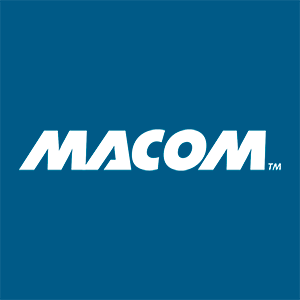
MACOM (MTSI)
We see potential in MACOM. Its outstanding sales growth and unit economics give us a line of sight to robust future profits.― StockStory Analyst Team
1. News
2. Summary
Why MACOM Is Interesting
Founded in the 1950s as Microwave Associates, a communications supplier to the US Army Signal Corp, today MACOM Technology Solutions (NASDAQ: MTSI) is a provider of analog chips used in optical, wireless, and satellite networks.
- Earnings growth has massively outpaced its peers over the last five years as its EPS has compounded at 29.1% annually
- Offerings are difficult to replicate at scale and lead to a premier gross margin of 54.4%
- A blemish is its below-average returns on capital indicate management struggled to find compelling investment opportunities, and its falling returns suggest its earlier profit pools are drying up


MACOM is close to becoming a high-quality business. If you like the stock, the valuation looks fair.
Why Is Now The Time To Buy MACOM?
High Quality
Investable
Underperform
Why Is Now The Time To Buy MACOM?
MACOM’s stock price of $183.45 implies a valuation ratio of 42.2x forward P/E. This lofty multiple could mean short-term stock-price swings, but big picture, we think the price is appropriate for the top-line growth you get.
If you think the market is undervaluing the company, now could be a good time to build a position.
3. MACOM (MTSI) Research Report: Q3 CY2025 Update
Network chips maker MACOM Technology Solutions (NASDAQ: MTSI) met Wall Streets revenue expectations in Q3 CY2025, with sales up 30.1% year on year to $261.2 million. The company expects next quarter’s revenue to be around $269 million, coming in 1.8% above analysts’ estimates. Its non-GAAP profit of $0.94 per share was 1.2% above analysts’ consensus estimates.
MACOM (MTSI) Q3 CY2025 Highlights:
- Revenue: $261.2 million vs analyst estimates of $260.1 million (30.1% year-on-year growth, in line)
- Adjusted EPS: $0.94 vs analyst estimates of $0.93 (1.2% beat)
- Adjusted EBITDA: $75.71 million vs analyst estimates of $82.87 million (29% margin, 8.6% miss)
- Revenue Guidance for Q4 CY2025 is $269 million at the midpoint, above analyst estimates of $264.1 million
- Adjusted EPS guidance for Q4 CY2025 is $1 at the midpoint, above analyst estimates of $0.96
- Operating Margin: 15.2%, up from 13.7% in the same quarter last year
- Free Cash Flow Margin: 18.9%, down from 28.5% in the same quarter last year
- Inventory Days Outstanding: 182, up from 174 in the previous quarter
- Market Capitalization: $11.15 billion
Company Overview
Founded in the 1950s as Microwave Associates, a communications supplier to the US Army Signal Corp, today MACOM Technology Solutions (NASDAQ: MTSI) is a provider of analog chips used in optical, wireless, and satellite networks.
MACOM's semiconductor components serve as critical building blocks in complex electronic systems across multiple industries. The company's products include integrated circuits, multi-chip modules, amplifiers, switches, diodes, and various RF and optical subsystems that enable high-performance signal transmission and processing.
In the Industrial and Defense sector, MACOM provides components for military radar systems, electronic countermeasures, satellite communications, and tactical radios. The company's "Trusted Foundry" status from the U.S. Department of Defense gives it a competitive advantage for military applications requiring domestic supply chains. Beyond defense, MACOM serves industrial applications like test equipment, scientific instruments, and medical imaging systems where precise signal handling is essential.
For Data Centers, MACOM delivers optical and photonic components that enable high-speed data transmission at 100G, 400G, 800G and beyond. These products help solve the challenge of moving massive amounts of data quickly and efficiently between and within data centers. The company offers a comprehensive portfolio including PAM-4 physical layers, transimpedance amplifiers, lasers, and photodetectors.
In the Telecommunications market, MACOM supports infrastructure for cellular networks, fiber optic systems, and satellite communications. Its components help telecom providers expand bandwidth to meet growing demands for data-intensive applications. The company's manufacturing model combines internal fabrication facilities in Massachusetts, Michigan, and France with external foundry partnerships, giving it flexibility in production while maintaining quality control.
MACOMs peers and competitors include Analog Devices (NASDAQ:ADI), Texas Instruments (NASDAQ:TXN), Skyworks (NASDAQ:SWKS), Infineon (XTRA:IFX), NXP Semiconductors NV (NASDAQ:NXPI), Monolithic Power Systems (NASDAQ: MPWR), Marvell Technology (NASDAQ:MRVL), and Microchip (NASDAQ:MCHP).
4. Analog Semiconductors
Longer manufacturing duration allows analog chip makers to generate greater efficiencies, leading to structurally higher gross margins than their fabless digital peers. The downside of vertical integration is that cyclicality can be more pronounced for analog chipmakers, as capacity utilization upsides work in reverse during down periods.
5. Revenue Growth
A company’s long-term sales performance is one signal of its overall quality. Any business can put up a good quarter or two, but many enduring ones grow for years. Luckily, MACOM’s sales grew at an impressive 12.8% compounded annual growth rate over the last five years. Its growth beat the average semiconductor company and shows its offerings resonate with customers, a helpful starting point for our analysis. Semiconductors are a cyclical industry, and long-term investors should be prepared for periods of high growth followed by periods of revenue contractions.
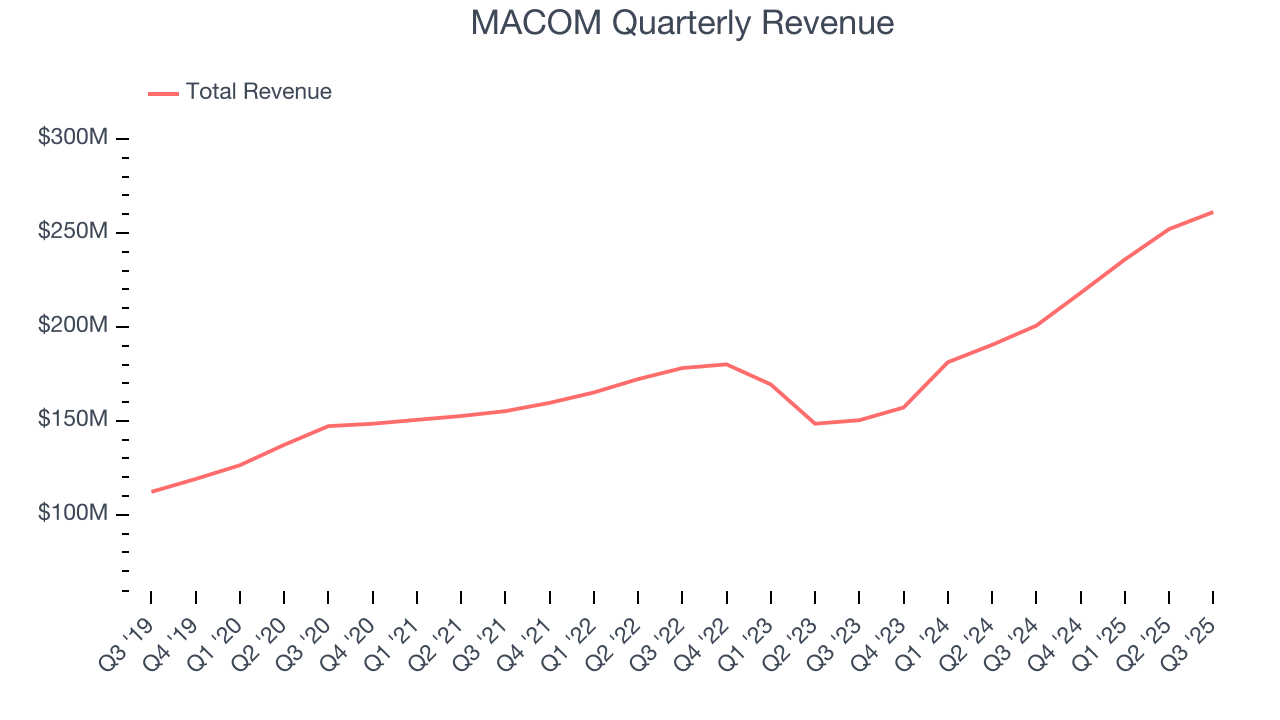
We at StockStory place the most emphasis on long-term growth, but within semiconductors, a half-decade historical view may miss new demand cycles or industry trends like AI. MACOM’s annualized revenue growth of 22.1% over the last two years is above its five-year trend, suggesting its demand was strong and recently accelerated. 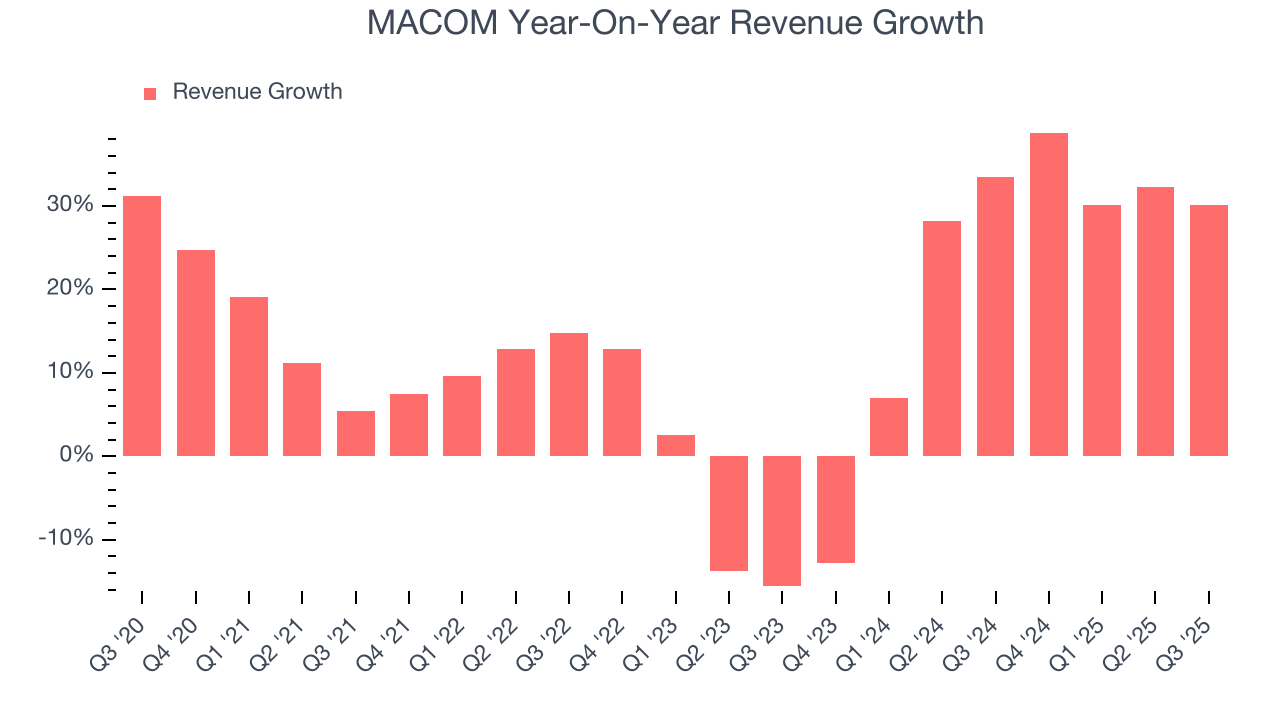
This quarter, MACOM’s year-on-year revenue growth of 30.1% was wonderful, and its $261.2 million of revenue was in line with Wall Street’s estimates. Beyond meeting estimates, this marks 7 straight quarters of growth, showing that the current upcycle has had a good run - a typical upcycle usually lasts 8-10 quarters. Company management is currently guiding for a 23.3% year-on-year increase in sales next quarter.
Looking further ahead, sell-side analysts expect revenue to grow 13.7% over the next 12 months, a deceleration versus the last two years. Despite the slowdown, this projection is noteworthy and suggests the market is forecasting success for its products and services.
6. Product Demand & Outstanding Inventory
Days Inventory Outstanding (DIO) is an important metric for chipmakers, as it reflects a business’ capital intensity and the cyclical nature of semiconductor supply and demand. In a tight supply environment, inventories tend to be stable, allowing chipmakers to exert pricing power. Steadily increasing DIO can be a warning sign that demand is weak, and if inventories continue to rise, the company may have to downsize production.
This quarter, MACOM’s DIO came in at 182, which is 19 days above its five-year average, suggesting that the company’s inventory has grown to higher levels than we’ve seen in the past.
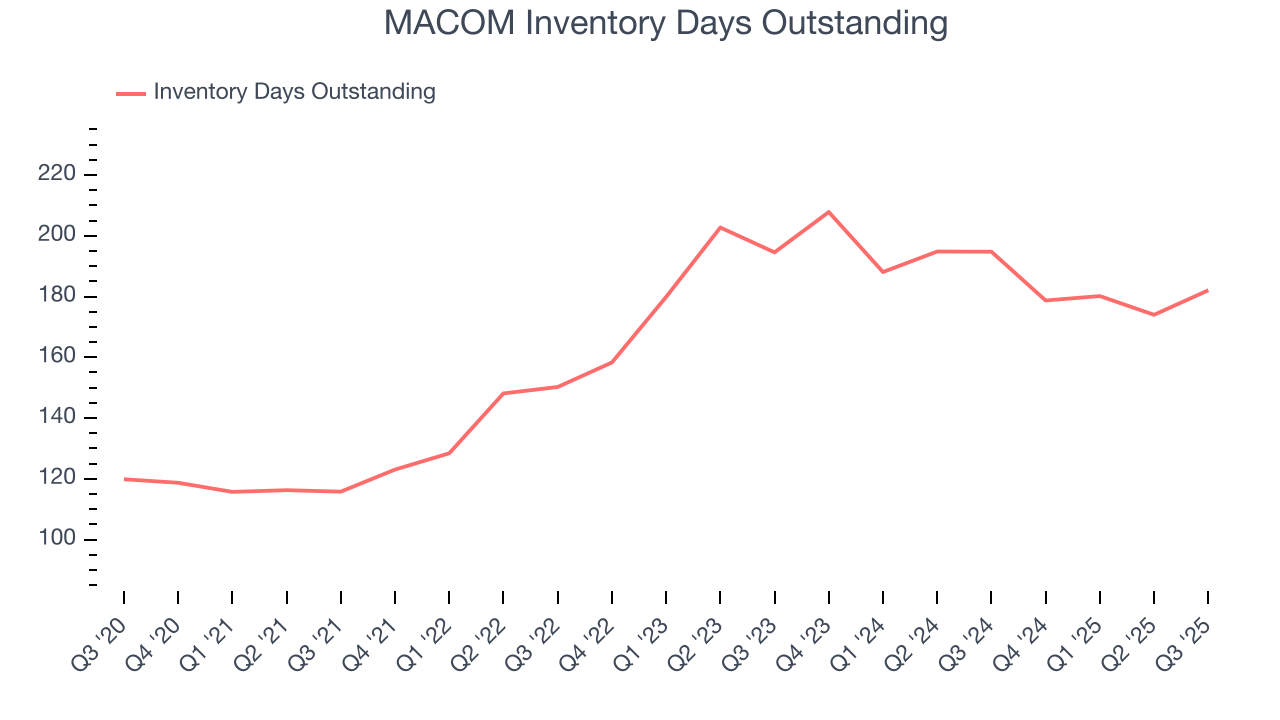
7. Gross Margin & Pricing Power
In the semiconductor industry, a company’s gross profit margin is a critical metric to track because it sheds light on its pricing power, complexity of products, and ability to procure raw materials, equipment, and labor.
MACOM’s gross margin is well ahead of its semiconductor peers, and its strong pricing power is an output of its differentiated, value-add products. As you can see below, it averaged an excellent 54.4% gross margin over the last two years. Said differently, roughly $54.38 was left to spend on selling, marketing, R&D, and general administrative overhead for every $100 in revenue. 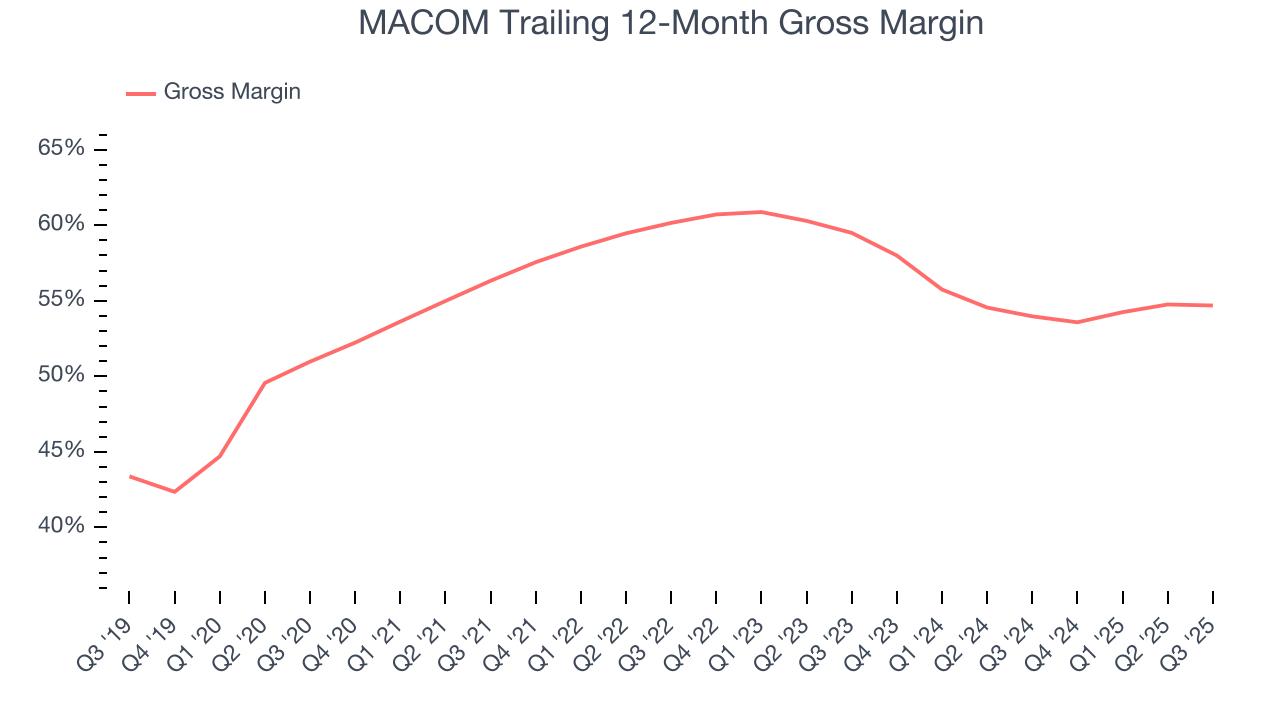
MACOM’s gross profit margin came in at 54.5% this quarter, in line with the same quarter last year. Zooming out, the company’s full-year margin has remained steady over the past 12 months, suggesting its input costs (such as raw materials and manufacturing expenses) have been stable and it isn’t under pressure to lower prices.
8. Operating Margin
Operating margin is an important measure of profitability as it shows the portion of revenue left after accounting for all core expenses – everything from the cost of goods sold to advertising and wages. It’s also useful for comparing profitability across companies with different levels of debt and tax rates because it excludes interest and taxes.
MACOM was profitable over the last two years but held back by its large cost base. Its average operating margin of 12% was weak for a semiconductor business. This result is surprising given its high gross margin as a starting point.
Analyzing the trend in its profitability, MACOM’s operating margin might fluctuated slightly but has generally stayed the same over the last five years. This raises questions about the company’s expense base because its revenue growth should have given it leverage on its fixed costs, resulting in better economies of scale and profitability.
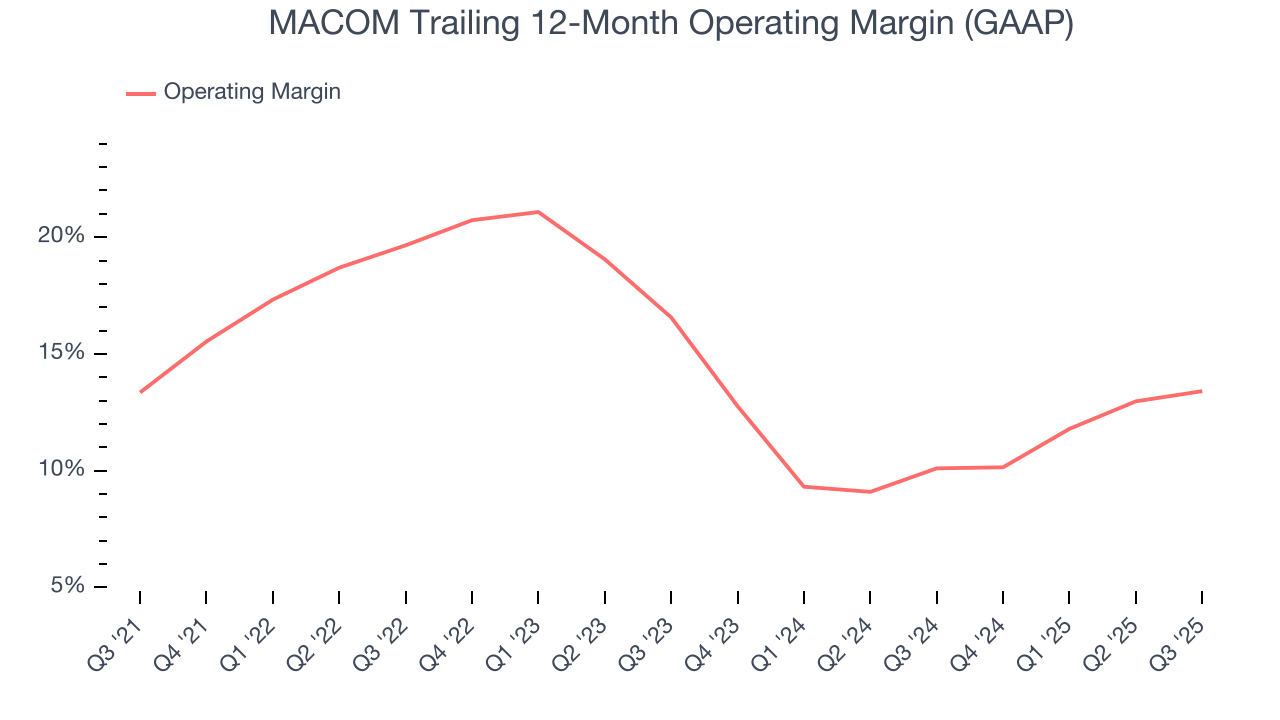
This quarter, MACOM generated an operating margin profit margin of 15.2%, up 1.4 percentage points year on year. The increase was encouraging, and because its operating margin rose more than its gross margin, we can infer it was more efficient with expenses such as marketing, R&D, and administrative overhead.
9. Earnings Per Share
Revenue trends explain a company’s historical growth, but the long-term change in earnings per share (EPS) points to the profitability of that growth – for example, a company could inflate its sales through excessive spending on advertising and promotions.
MACOM’s EPS grew at a spectacular 29.1% compounded annual growth rate over the last five years, higher than its 12.8% annualized revenue growth. This tells us the company became more profitable on a per-share basis as it expanded.

In Q3, MACOM reported adjusted EPS of $0.94, up from $0.73 in the same quarter last year. This print beat analysts’ estimates by 1.2%. Over the next 12 months, Wall Street expects MACOM’s full-year EPS of $3.48 to grow 17.8%.
10. Cash Is King
If you’ve followed StockStory for a while, you know we emphasize free cash flow. Why, you ask? We believe that in the end, cash is king, and you can’t use accounting profits to pay the bills.
MACOM has shown decent cash profitability, giving it some flexibility to reinvest or return capital to investors. The company’s free cash flow margin averaged 18.4% over the last two years, slightly better than the broader semiconductor sector.
Taking a step back, we can see that MACOM’s margin dropped by 3.8 percentage points over the last five years. We’re willing to live with its performance for now but hope its cash conversion can rise soon. If its declines continue, it could signal increasing investment needs and capital intensity.
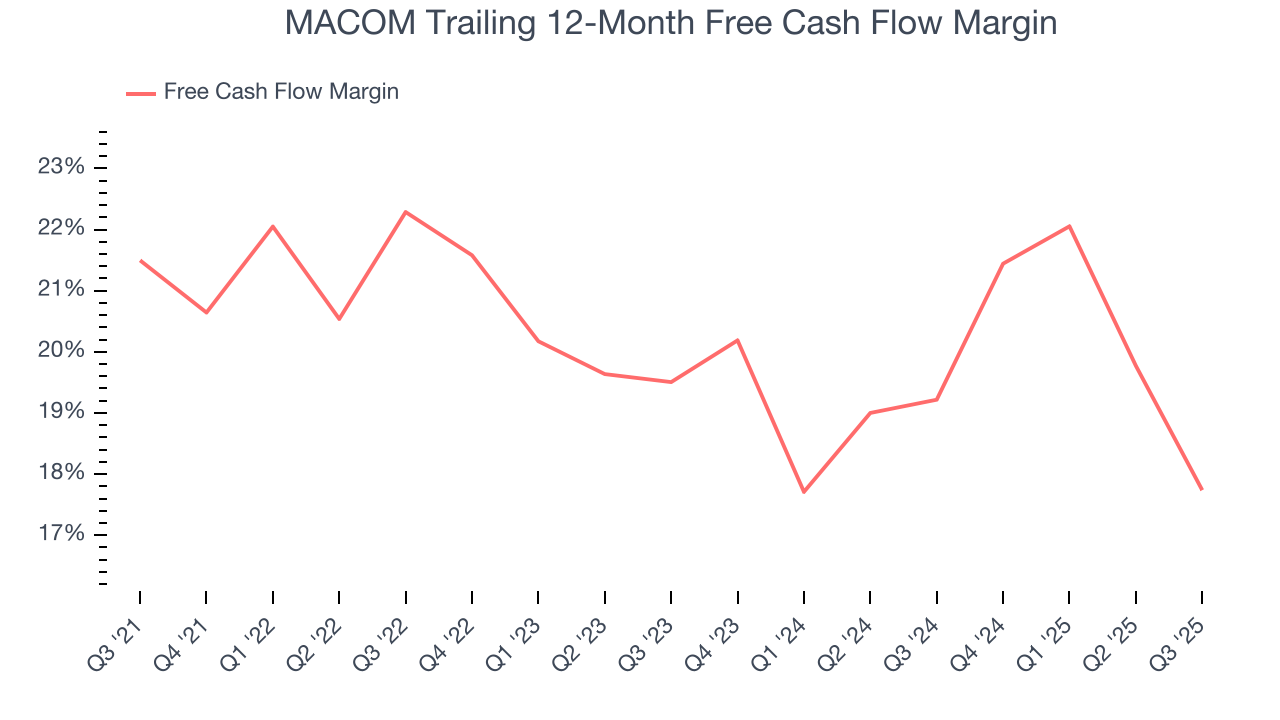
MACOM’s free cash flow clocked in at $49.42 million in Q3, equivalent to a 18.9% margin. The company’s cash profitability regressed as it was 9.5 percentage points lower than in the same quarter last year, which isn’t ideal considering its longer-term trend.
11. Return on Invested Capital (ROIC)
EPS and free cash flow tell us whether a company was profitable while growing its revenue. But was it capital-efficient? Enter ROIC, a metric showing how much operating profit a company generates relative to the money it has raised (debt and equity).
Although MACOM has shown solid business quality lately, it historically did a mediocre job investing in profitable growth initiatives. Its five-year average ROIC was 11.4%, somewhat low compared to the best semiconductor companies that consistently pump out 35%+.

12. Balance Sheet Assessment
Businesses that maintain a cash surplus face reduced bankruptcy risk.

MACOM is a profitable, well-capitalized company with $786 million of cash and $568.1 million of debt on its balance sheet. This $217.9 million net cash position gives it the freedom to borrow money, return capital to shareholders, or invest in growth initiatives. Leverage is not an issue here.
13. Key Takeaways from MACOM’s Q3 Results
It was encouraging to see MACOM’s revenue guidance for next quarter beat analysts’ expectations. We were also happy its adjusted operating income narrowly outperformed Wall Street’s estimates. On the other hand, its inventory levels increased. Zooming out, we think this was a mixed quarter. The stock traded up 2.9% to $154.01 immediately after reporting.
14. Is Now The Time To Buy MACOM?
Updated: December 3, 2025 at 9:17 PM EST
A common mistake we notice when investors are deciding whether to buy a stock or not is that they simply look at the latest earnings results. Business quality and valuation matter more, so we urge you to understand these dynamics as well.
In our opinion, MACOM is a solid company. First off, its revenue growth was impressive over the last five years and is expected to accelerate over the next 12 months. And while its mediocre ROIC lags the market and is a headwind for its stock price, its astounding EPS growth over the last five years shows its profits are trickling down to shareholders. On top of that, its gross margins indicate it has pricing power.
MACOM’s P/E ratio based on the next 12 months is 42.2x. When scanning the semiconductor space, MACOM trades at a fair valuation. If you’re a fan of the business and management team, now is a good time to scoop up some shares.
Wall Street analysts have a consensus one-year price target of $183 on the company (compared to the current share price of $183.45).













